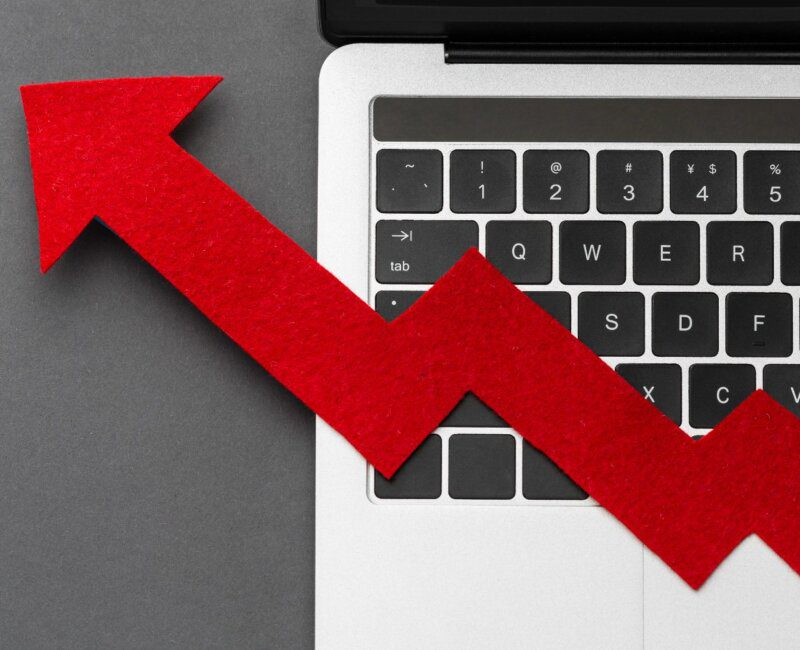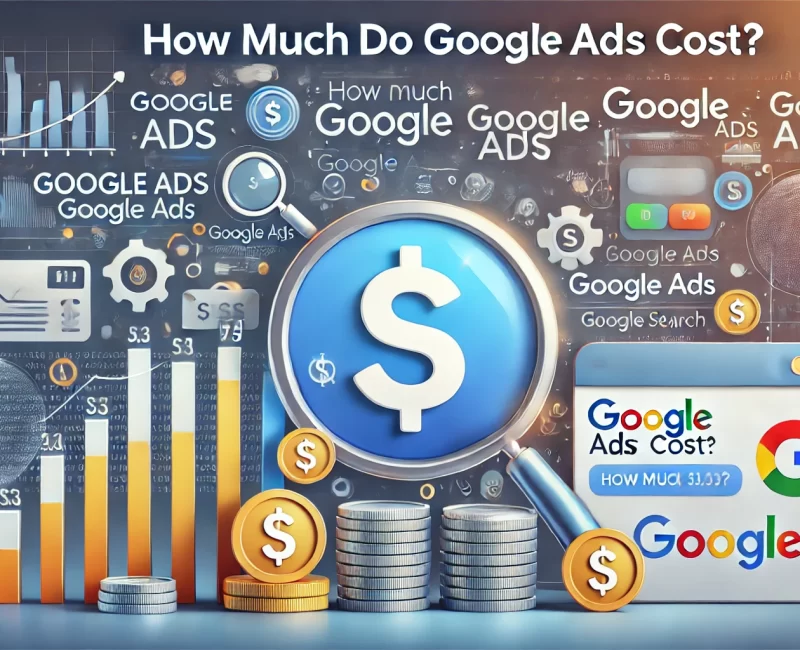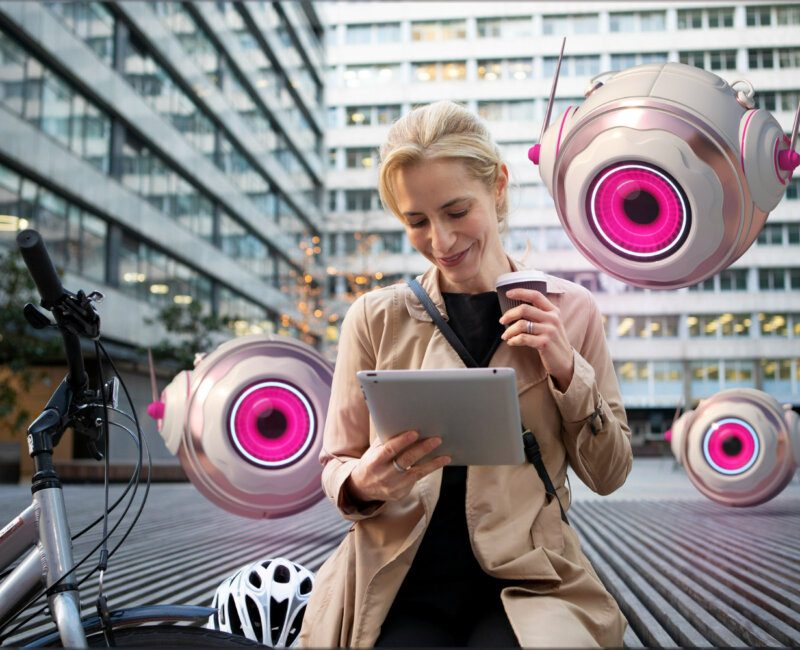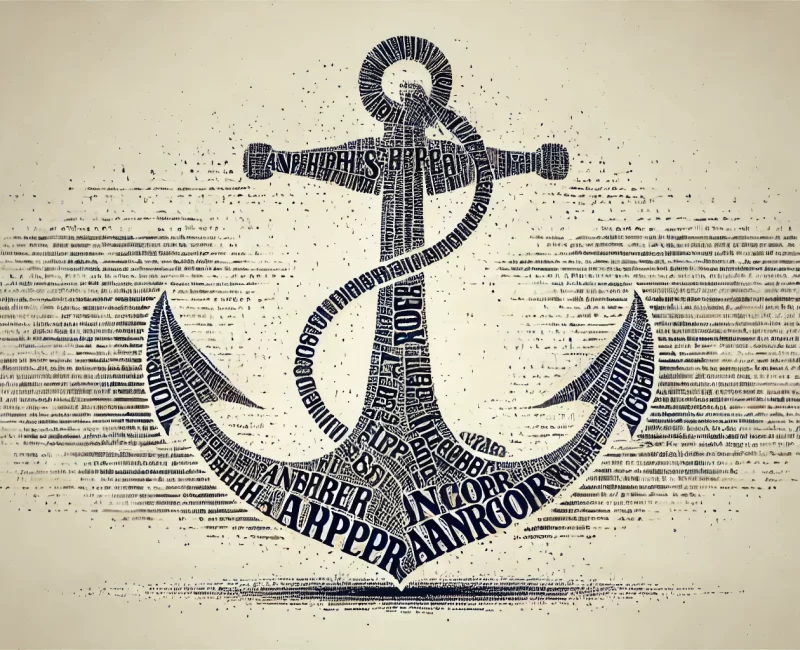
AI is increasingly becoming a part of our everyday lives, but its integration into Google’s ecosystem is far from new. For years, Google Ads has been leveraging AI—specifically, machine learning- enabling digital marketers to enhance ad copy, optimise audience targeting, and streamline day-to-day campaign management.
Integrating AI into your PPC efforts allows for deeper insights into user behaviour, predictive analytics, and automation of marketing tasks. This means processes like keyword selection, bid management, and ad placement can be handled more efficiently, all in real-time.
As AI advances, its ability to boost the effectiveness and efficiency of PPC campaigns will only expand. In this blog, we’ll explore how you can leverage AI strategies to optimise your Google Ads campaigns in 2024.
- The Growth of AI Within Google Ads
- Automated Bidding and Enhanced CPC
- Smart Bidding Strategies
- The Evolution of Machine Learning in Google Ads
- Simplifying AI-Powered Campaign Creation
- The Drawbacks of Using AI Features in Campaigns
- AI Video Creation
- Enhanced Audience Targeting
- A Caution for Certain Businesses
- Generate and Edit Images With Google AI
- Measuring the Success of Google’s Built-in AI Tools
- Conclusion
The Growth of AI Within Google Ads
As we mentioned earlier, AI isn’t a recent addition to Google Ads. While the term “AI” has gained significant buzz and is currently taking the internet by storm, its integration into the platform is far from new. In fact, various forms of AI, particularly machine learning, have been an integral part of Google Ads for over a decade.
To clarify, machine learning is a subset of AI that Google has leveraged extensively in developing its ad features. While some may still be sceptical about the depth of AI integration, there’s no denying that the platform has relied on machine learning for quite some time to enhance its functionality.
With that context in mind, let’s examine how Google Ads first began harnessing the power of AI.
Automated Bidding and Enhanced CPC
The journey arguably began back in 2010 with the introduction of automated bidding, a strategy designed by Google to “take the heavy lifting and guesswork out of setting bids.” This innovation laid the groundwork for a new era of automation on the platform.
This development soon led to the launch of Enhanced CPC (Cost-Per-Click), marking the start of a wave of automated features powered by advanced machine learning. These tools were aimed at optimising bid adjustments in real-time, maximising ad performance while minimising manual effort.
Smart Bidding Strategies
The evolution continued in 2016 with the introduction of smart bidding strategies. Marketers could now automate keyword bids to maximise conversions by leveraging machine learning algorithms. This went a step further by allowing bidding optimisations aimed at achieving specific goals, such as a target Cost Per Acquisition (CPA) or Return on Ad Spend (ROAS).
Google Ads uses a range of bidding signals based on consumer data to predict the best possible outcomes that are aligned with your objectives. These signals include:
- Gender
- Age
- Device type
- Location
- Time of day
- Day of the week
Over the years, these features have been fine-tuned and expanded to encompass various campaign types, including Google Shopping, YouTube, and Discovery, increasing their sophistication and effectiveness.
The Evolution of Machine Learning in Google Ads
As we approached recent years, automated bidding strategies were further enhanced by even more sophisticated machine learning algorithms. This shift reduced the need for manual adjustments, increasingly favouring fully automated bidding and real-time optimisations.
Today, we have campaign types like Performance Max, almost entirely driven by machine learning—now commonly called AI. These campaigns leverage automation to optimise across multiple channels, leaving less room for manual intervention.
Currently, Google’s AI developments are shifting away from just bidding strategies. The new focus is on launching tools designed to streamline campaign creation and optimisation, helping marketers craft more effective campaigns with minimal effort.
Simplifying AI-Powered Campaign Creation
Today, creating an AI-powered campaign is easier than ever. At the campaign level, you only need to enter the URLs of your website’s products or services. Google’s AI will generate relevant keywords, headlines, descriptions, images, and other assets tailored to your campaign. From there, simply review the suggestions and apply the ones that best fit your business needs.
Example: Keyword and Asset Generation
Performance Max campaigns are a prime example of how AI-driven strategies can boost business growth. According to Google’s reports, advertisers who have adopted this campaign type have seen, on average, an 18% increase in conversions at a similar cost.
To further streamline the process, Google has introduced a feature that allows you to paste a brief text description of your business, product, or service. Using this input, the AI generates a selection of headlines and descriptions for you to choose from.
Example: Headline and Description Generation
Leveraging AI for YouTube Campaigns
YouTube is another area where AI-powered tools transform how video ads are created and optimised. Once you upload your video, YouTube’s AI can enhance it to be more engaging for diverse audiences.
Popular features include trimming, flipping, and adding voiceovers or music, ensuring that your ads are high-quality and aligned with your audience’s viewing preferences. These enhancements make delivering impactful video content that captures attention and drives results easier.
The Drawbacks of Using AI Features in Campaigns
While these AI tools can be incredibly useful, they have some limitations. Because these features are still relatively new, they can sometimes generate lacklustre headlines and descriptions, especially if you don’t provide a detailed description of your business. Machine learning algorithms lack the nuance needed to fully understand businesses with a unique or niche offering.
There’s still a fine line to walk, even for businesses with more common services. AI-generated ad copy can be a helpful starting point, particularly if you’re struggling with ideas. However, if you don’t take the time to review and refine the copy, you may end up with headlines and descriptions that feel flat or generic.
Our advice: always review and adjust the generated content to ensure it aligns with your brand’s voice and message. The goal of your ads is to captivate your audience and drive them to your website or service. If the AI-generated copy doesn’t engage you, it’s worth investing the time to fine-tune it for a better impact.
AI Video Creation
Google has recently placed a strong emphasis on video content within its ad platform, which is why it introduced AI-powered video creation tools. These tools are designed to help businesses with limited budgets still compete effectively in the video advertising space.
While the benefits of being visible on the platform are clear—especially for boosting brand awareness—it’s crucial to focus on the quality and context of the content you produce using these tools.
If the videos generated by AI on YouTube don’t meet a high standard, and your competitors are creating polished, professional ads, your brand could risk appearing less credible. This can negatively impact both your brand perception and overall campaign performance.
Enhanced Audience Targeting
Google’s AI capabilities have reached new heights, enabling its algorithms to use the data you provide to deliver your ads to the right audience at precisely the right moment, maximising the likelihood of conversion.
By analysing the probability of your campaigns converting, Google’s AI determines the optimal bid to enhance your campaign’s performance. In our experience, this technology is particularly effective for accounts with high conversion volumes or those with richer levels of conversion data.
This AI-driven approach can significantly improve digital ad campaigns, boosting both performance and ROI. However, while this feature showcases the full potential of AI by identifying the best users within your target location, we still advise supplementing it with audience signals. Providing Google with these additional insights can help guide the algorithm more accurately toward your desired audience.
In search campaigns, you can utilise detailed demographic targeting to specify which users you want to reach, even preventing your ads from being shown to those outside your defined demographics.
The new Performance Max campaign type leverages AI to autonomously decide who, when, and where your ads are displayed, allowing for a fully optimised, hands-off approach to audience targeting.
A Caution for Certain Businesses
For newer businesses with limited ad data or a broad portfolio of services and products, Google’s AI may struggle to accurately identify the ideal searches and audiences to target 100% of the time.
We strongly recommend using the audience signal feature in these campaigns. By doing so, you can help guide Google’s algorithm towards the right target audience, effectively “nudging” it in the desired direction.
While Google ultimately decides who to target, providing the algorithm with additional data increases your chances of success. By collaborating with the AI tool, you can significantly improve the likelihood of achieving strong campaign results.
Generate and Edit Images With Google AI
Google has taken its AI capabilities to the next level with the launch of image creation tools. You can now generate original images, replace backgrounds, automatically enhance visuals, and create multiple ad sizes optimised for engaging audiences across Google’s channels through Performance Max.
This feature can save marketers significant time and resources, allowing the creation of high-quality image assets tailored to your brand without the need for a dedicated designer. However, it’s important to note that this tool is currently in BETA, so there may be some initial hiccups as it continues to be refined.
Consider Quality Versus Your Competition
Like other AI-driven tools we’ve covered, it’s crucial to provide detailed prompts to maximise the image generator’s effectiveness. However, the quality of the output is still paramount. If the generated images are too generic, lack originality, or fail to accurately reflect your brand, they may not be worth using—regardless of the time saved.
Ensuring that your visuals stand out against competitors is key. Poor-quality images can dilute your brand’s impact and may not resonate with your target audience, so use this tool judiciously to maintain your brand’s integrity.
Measuring the Success of Google’s Built-in AI Tools
While leveraging AI features can offer significant advantages, it’s crucial to track and measure their success to ensure they deliver the desired results.
Google’s AI tools require time, patience, and ongoing optimisation. This is why monitoring specific metrics is essential to understand how users interact with these AI-powered features. Here are the key metrics we recommend focusing on:
- Adoption Rate: The percentage of users who are actually utilising the AI features.
- Interaction Rate: How frequently users engage with AI-generated content.
- Session Time: The duration users spend interacting with AI-enhanced ads or tools.
- Queries per Session: The number of queries users make, indicating engagement and relevance.
- Abandonment Rate: How often users drop off without completing desired actions.
- Customer Feedback: Direct insights from users on the effectiveness and usability of AI tools.
By regularly assessing these metrics, you can refine your AI strategies for optimal performance and ensure they align with your business goals.









